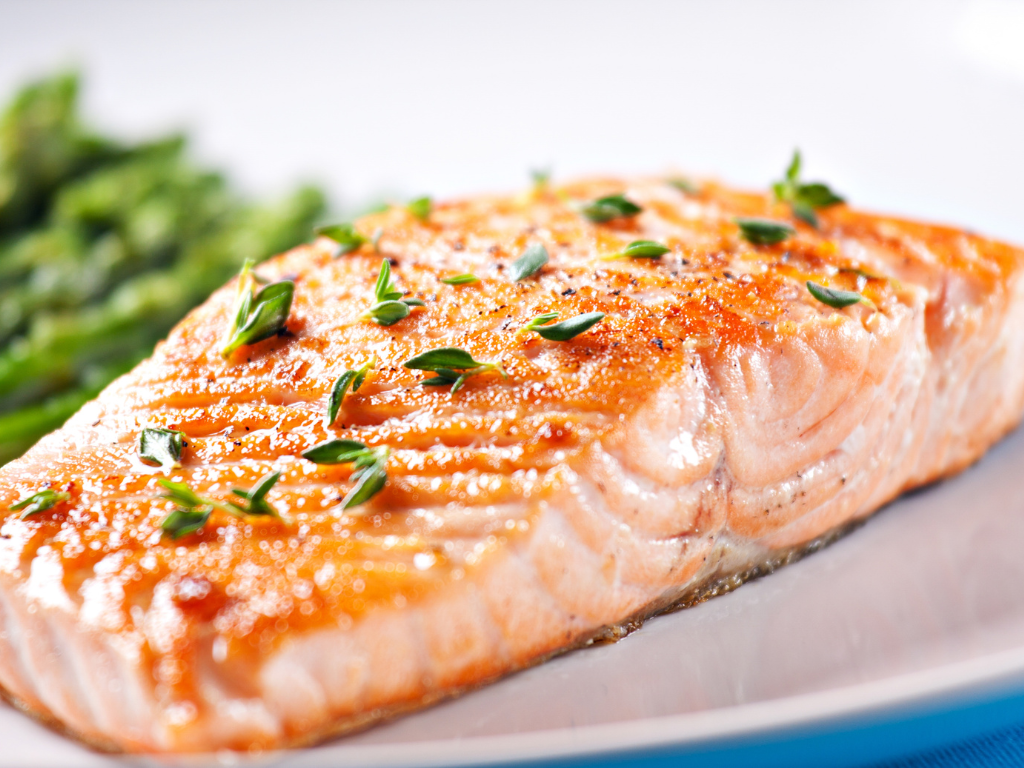JOIN DR. SAM SHAY'S NEWSLETTER
Get notified every Thursday with health tips.
YouTube

Nurturing Health: A Paleo, Low-Histamine Approach to Eating
When managing dietary needs, finding recipes that are both delicious and aligned with specific health requirements can be challenging. Today, I’d like to share a paleo-friendly, low-histamine recipe that not only tastes great but also supports overall wellbeing through carefully selected ingredients.
Understanding Paleo and Low-Histamine Diets
The paleo diet focuses on foods that our ancestors might have eaten during the Paleolithic era, emphasizing whole foods like lean meats, fish, fruits, vegetables, nuts, and seeds while avoiding processed foods, grains, and dairy.
A low-histamine diet aims to reduce foods that either contain histamine or trigger its release in the body, which can be beneficial for those with histamine intolerance or certain inflammatory conditions.
Herb-Roasted Salmon with Rainbow Vegetables
This simple yet nourishing dish combines fresh salmon with colorful vegetables and anti-inflammatory herbs for a complete meal that’s both paleo and low in histamine.
Herb-Roasted Salmon with Rainbow Vegetables
Paleo & Low-Histamine
Ingredients (Serves 2)
- 2 fresh salmon fillets (12 oz total, preferably wild-caught)
- 2 tbsp extra virgin olive oil
- 1 tsp fresh thyme, chopped
- 1 tsp fresh rosemary, chopped
- 1 clove garlic, minced
- 1 medium zucchini, sliced (about 1 cup)
- 1 cup fresh asparagus, trimmed
- 1 cup carrots, julienned
- 1 cup sweet potato, cubed
- 1/4 cup fresh parsley, chopped
- Sea salt and freshly ground black pepper to taste
- 1 lemon, cut into wedges (for serving)
Instructions
- Preheat oven to 400°F (200°C).
- In a small bowl, mix 1 tbsp olive oil with thyme, rosemary, and garlic.
- Place salmon fillets on a parchment-lined baking sheet and brush with the herb oil mixture.
- In a large bowl, toss zucchini, asparagus, carrots, and sweet potato with the remaining olive oil, salt, and pepper.
- Arrange vegetables around the salmon on the baking sheet.
- Roast for 15-18 minutes, until salmon is cooked through and vegetables are tender.
- Garnish with fresh parsley and serve with lemon wedges.
Nutritional Information (Per Serving)
- Protein: 34g
- Fat: 22g
- Carbohydrates: 18g
- Fiber: 5g
- Calories: 405
Health Benefits of Each Ingredient
Salmon
As the star protein in this dish, fresh salmon provides high-quality protein (34g per serving) and is rich in omega-3 fatty acids, which help reduce inflammation and support heart and brain health. Salmon is also a good source of vitamin D and B vitamins. Using fresh salmon rather than smoked or canned ensures it remains low in histamine.
Extra Virgin Olive Oil
This heart-healthy fat (contributing to the 22g of fat per serving) contains oleocanthal, which has anti-inflammatory properties similar to ibuprofen. It’s rich in monounsaturated fats and antioxidants that support cellular health and may help reduce the risk of chronic diseases.
Fresh Herbs (Thyme, Rosemary, Parsley)
These herbs aren’t just for flavor—they’re medicinal powerhouses:
- Thyme contains thymol, which has antimicrobial properties and supports respiratory health
- Rosemary contains carnosic acid and rosmarinic acid, which have antioxidant and anti-inflammatory effects
- Parsley is rich in vitamin K, vitamin C, and flavonoids that support detoxification
Fresh herbs are generally well-tolerated on a low-histamine diet and provide flavor without additives.
Garlic
When used fresh and cooked thoroughly, garlic is generally well-tolerated in low-histamine diets. It contains allicin, which has antibacterial and antiviral properties, and may help support immune function and cardiovascular health.
Vegetables
Zucchini
Low in carbohydrates but high in water content, zucchini provides vitamin A, manganese, and vitamin C. It contributes to the dish’s fiber content (5g per serving) while being gentle on the digestive system.
Asparagus
This nutrient-dense vegetable is high in folate, vitamin K, and antioxidants. It contains prebiotic fiber that supports gut health and glutathione, which plays a role in immune function and detoxification.
Carrots
Rich in beta-carotene, which the body converts to vitamin A, carrots support eye health, immune function, and skin health. They add natural sweetness and vibrant color without triggering histamine responses.
Sweet Potato
Contributing most of the 18g of carbohydrates per serving, sweet potatoes provide sustained energy and are rich in vitamin A, potassium, and vitamin C. Unlike grains, sweet potatoes are paleo-friendly complex carbohydrates that help stabilize blood sugar levels.
Sea Salt
Unlike table salt, sea salt contains trace minerals that support electrolyte balance and proper hydration. Using it moderately enhances flavor without processed additives.
Lemon
While histamine content in citrus can vary, fresh lemon served on the side allows individuals to adjust according to their tolerance. When tolerated, lemon adds vitamin C and brightens the dish’s flavors.
Why This Recipe Works for Specific Dietary Needs
This meal is designed to maximize nutrition while minimizing potential triggers:
- Low in histamine: By using fresh (not frozen) salmon, avoiding fermented foods, and focusing on fresh vegetables and herbs, this recipe keeps histamine levels low.
- Paleo-compliant: Free from grains, dairy, legumes, and processed foods, this meal aligns perfectly with paleo principles while providing balanced nutrition.
- Anti-inflammatory: The combination of omega-3 fatty acids from salmon, antioxidants from vegetables, and active compounds in herbs helps combat inflammation.
- Nutrient-dense: Each serving provides a complete nutritional profile with quality protein, healthy fats, complex carbohydrates, and fiber, along with numerous vitamins and minerals.
By focusing on fresh, whole-food ingredients prepared simply, this recipe demonstrates that therapeutic diets don’t have to be restrictive or bland. The vibrant colors of the vegetables not only make for an appealing presentation but also indicate the diverse phytonutrients present in this nourishing meal.
What other specialized dietary approaches are you interested in exploring? I’d be happy to discuss more recipes or nutrition strategies tailored to specific health needs.
AVAILABLE WORLDWIDE VIA ZOOM
© 10Pillar Wellness Inc 2020. All Rights Reserved
TERMS & CONDITIONS
DISCLAIMER
FTC DISCLOSURE
DMCA POLICY
DIGITAL PRODUCT TERMS AND CONDITIONS